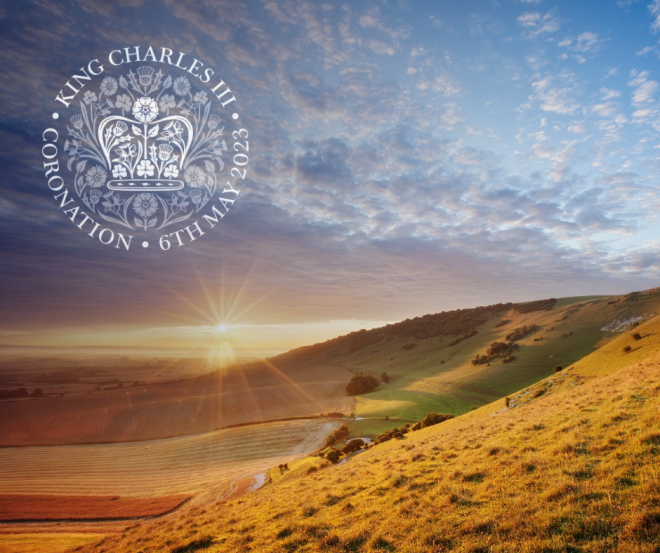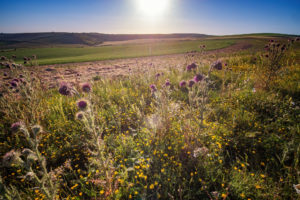Think piece: Coronation, conservation and consultations
May 17, 2023
Whatever one’s view, the coronation of King Charles III was a spectacle that captured the attention with all its regalia and ancient ceremonial rituals. And whether you are a fan of royalty or otherwise, the crowning of King Charles does have some significance in the sphere of planning, design and architecture.
As many will know, the future monarch sparked a long-running debate about what architecture (and more widely planning) is about, following his now infamous after-dinner speech at the Royal Institute for British Architects’ 150th anniversary celebrations in 1984. His description of the proposed extension to the National Gallery in London as a ‘monstrous carbuncle on the face of a much-loved and elegant friend’ may have been the reason for the original contemporary designs being scrapped in favour of a more classical design. It certainly caused a stir amongst ‘the professionals’ and, whilst not best timed given all the pre-work, was a reminder that planning is literally a public-facing example of state intervention designed for the public good.

Some years later, his 1989 book A Vision of Britain: A Personal View of Architecture argued for the need to consider the unique character of places and always consider the quality of finish. Along with the usual list of planning and architectural tomes of the day, his book and illustrations (very unfashionable at the time and I suspect may well be so still in some quarters) and the concept of all things ‘connected’ made an impression on me as I decided what to do for the future.
More recently, his 2000-word essay in The Architectural Review set out 10 principles for urban masterplanning that Charles said “mix the best of the old with the best of the new” and provide a template for designing places “according to the human scale and with nature at the heart of the process”. He was very careful to make clear this was not an anti-modern approach and his concern was with the future. Many of his recommendations echo the ethos of National Park planning and our comprehensive design guide only adopted last year. For example, strong references to scale, harmony, developments designed to fit within the landscape they occupy, emphasis on use of local building material and acknowledging (not copying) regional traditional styles, as well as seeking to put the pedestrian at the centre of the design process.
Charles was one of the first public figures to speak passionately and frankly about the biodiversity and climate crisis. Whether you agree with his viewpoint or not, and how he expressed his views, I think having a figurehead with such a profound interest in placemaking for the future is to be celebrated, particularly when considering the pressures that National Parks face. With preparations for COP 28 to be held in the United Arab Emirates and controversies emerging it will be interesting whether our now King will enter the fray once more!
Conservation can be king, one might say, and that’s certainly true for Nepcote, which is featured in this newsletter after becoming the first new Conservation Area since the National Park’s inception. This designation is significant and really does underline the importance of human interaction with the landscape over several centuries to get the South Downs we see today. The input of Findon Neighbourhood Planning Group is to be commended.
 Turning to other matters, a fundamental shift is coming later this year with the introduction of mandatory Biodiversity Net Gain. It’s crucial we all get prepared for these important changes. There may be some short-term pain, but I think the long-term outcome will be worth it when it comes to nature recovery. The National Park has big ambitions for creating new spaces for nature to thrive and, as you’ll read about in this newsletter, ReNature credits will be one of the most exciting and innovative ways we can achieve this. ReNaturing spaces will not only bring benefits to biodiversity but as importantly will make the National Park an even better place to live for its local communities and provide health and well-being benefits for all those able to live work or spend time here.
Turning to other matters, a fundamental shift is coming later this year with the introduction of mandatory Biodiversity Net Gain. It’s crucial we all get prepared for these important changes. There may be some short-term pain, but I think the long-term outcome will be worth it when it comes to nature recovery. The National Park has big ambitions for creating new spaces for nature to thrive and, as you’ll read about in this newsletter, ReNature credits will be one of the most exciting and innovative ways we can achieve this. ReNaturing spaces will not only bring benefits to biodiversity but as importantly will make the National Park an even better place to live for its local communities and provide health and well-being benefits for all those able to live work or spend time here.
One point I would like to make about BNG is that all habitats play a part, not just those measured or scoring well. Wildlife does not adhere to human-made administrative boundaries or definitions, whether physical or paper-based. We may need to consider much loved and habitat-rich areas or pockets of land that, whilst not ‘scoring’ much, are deserving of our attention and conservation.
We’ve had a plethora of big consultations in recent times, including around updates on Biodiversity Net Gain, and guidance on Local Nature Recovery Partnerships. There will be more, I am sure. These consultations have underlined the need for greater resources, as well as additional training, directed at Local Planning Authorities. Personally I think a more joined-up approach between Defra and the Department for Levelling Up, Housing and Communities that streamlines some of these consultations would be desirable. After all, we all share the same goal of a better balance between growth and nature recovery at all scale.
Tim Slaney, Director of Planning

